Related Research Articles

Dragoons were originally a class of mounted infantry, who used horses for mobility, but dismounted to fight on foot. From the early 17th century onward, dragoons were increasingly also employed as conventional cavalry and trained for combat with swords and firearms from horseback. While their use goes back to the late 16th century, dragoon regiments were established in most European armies during the 17th and early 18th centuries; they provided greater mobility than regular infantry but were far less expensive than cavalry.
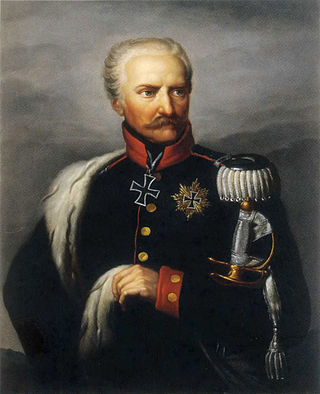
Gebhard Leberecht von Blücher, Fürst von Wahlstatt, Graf (count), later elevated to Fürst von Wahlstatt, was a Prussian Generalfeldmarschall. He earned his greatest recognition after leading his army against Napoleon I at the Battle of the Nations at Leipzig in 1813 and the Battle of Waterloo in 1815.
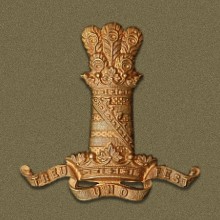
The 11th Hussars (Prince Albert's Own) was a cavalry regiment of the British Army established in 1715. It saw service for three centuries including the First World War and Second World War but then amalgamated with the 10th Royal Hussars (Prince of Wales' Own) to form the Royal Hussars in 1969.
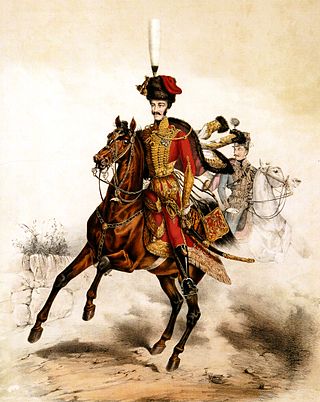
A hussar was a member of a class of light cavalry, originating in Central Europe during the 15th and 16th centuries. The title and distinctive dress of these horsemen were subsequently widely adopted by light cavalry regiments in European armies during the late 17th and 18th centuries. By the 19th century, hussars were wearing jackets decorated with braid plus shako or busby hats and had developed a romanticized image of being dashing and adventurous.

The King's German Legion was a British Army unit of mostly expatriated German personnel during the period 1803–16. The legion achieved the distinction of being the only German force to fight without interruption against the French during the Napoleonic Wars.
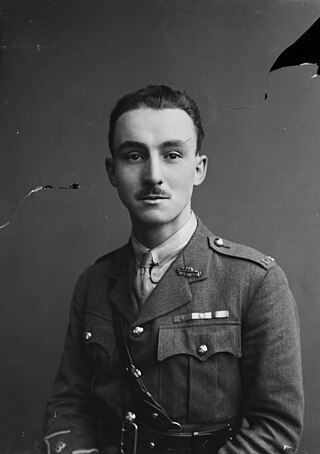
Brigadier Milton Fowler Gregg, was a Canadian military officer and a First World War recipient of the Victoria Cross, the highest award for gallantry in the face of the enemy that can be awarded to British and Commonwealth forces. In later life, he was a Member of the Canadian Parliament, cabinet minister, academic, soldier and diplomat.
Sergeant Harold Jackson VC was a British Army soldier and an English recipient of the Victoria Cross (VC), the highest and most prestigious award for gallantry in the face of the enemy that can be awarded to British and Commonwealth forces. A soldier with the East Yorkshire Regiment, he was awarded the VC for his actions in March 1918, during the German spring offensive of the First World War. He was killed in action five months later.
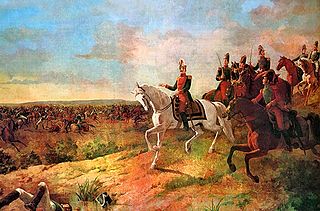
The Battle of Junín was a military engagement of the Peruvian War of Independence, fought in the highlands of the Junín Region on 6 August 1824. The preceding February the royalists had regained control of Lima, and having regrouped in Trujillo, Simón Bolívar in June led his rebel forces south to confront the Spanish under Field Marshal José de Canterac. The two armies met on the Plain of Junín in the Bombon Plateau, northwest of the Jauja Valley.

The 10th Royal Hussars (Prince of Wales's Own) was a cavalry regiment of the British Army raised in 1715. It saw service for three centuries including the First World War and Second World War but then amalgamated with the 11th Hussars (Prince Albert's Own) to form the Royal Hussars (Prince of Wales's Own) in October 1969.

The 8th King's Royal Irish Hussars was a cavalry regiment in the British Army, first raised in 1693. It saw service for three centuries including the First and Second World Wars. The regiment survived the immediate post-war reduction in forces, and went on to distinguish itself in the battles of the Korean War, but was recommended for amalgamation in the 1957 Defence White Paper prepared by Duncan Sandys. The regiment was amalgamated with the 4th Queen's Own Hussars, to form the Queen's Royal Irish Hussars in 1958.
Horrible Histories is an educational entertainment franchise encompassing many media including books, magazines, audio books, stage shows, TV shows, and more.

Graffigny-Chemin is a commune in the Haute-Marne department in north-eastern France.

The Queen's Own Worcestershire Hussars was a Yeomanry regiment of the British Army. First raised in 1794, it participated in the Second Boer War and World War I as horsed cavalry before being converted to an anti-tank regiment of the Royal Artillery for service in World War II. In 1956 it was amalgamated with the Warwickshire Yeomanry to form the Queen's Own Warwickshire and Worcestershire Yeomanry. The lineage is maintained by B Squadron, part of The Royal Yeomanry.
The 5th Hussar Regiment was a French Hussar regiment.
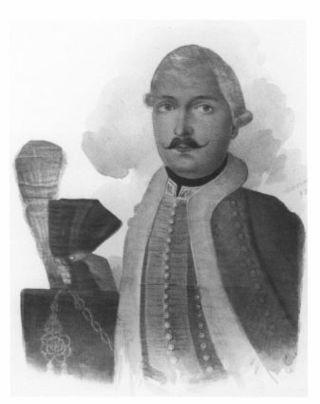
Johann Mészáros von Szoboszló joined the Habsburg army in 1756 and fought the Prussians, Ottoman Turks, and French during a long military career. During the French Revolutionary Wars, he fought in several campaigns. He commanded a division in the 1796-1797 Italian campaign against the army of Napoleon Bonaparte. He was Proprietor (Inhaber) of an Austrian Uhlan regiment from 1792 to 1797 and a Hussar regiment from 1797 to 1801.

Echoes is a novel by Danielle Steel, published by Random House in October 2004. The book is Steel's sixty-fourth novel.

The Battle of Ettlingen or Battle of Malsch was fought during the French Revolutionary Wars between the armies of the First French Republic and Habsburg Austria near the town of Malsch, 9 kilometres (6 mi) southwest of Ettlingen. The Austrians under Archduke Charles, Duke of Teschen tried to halt the northward advance of Jean Victor Marie Moreau's French Army of Rhin-et-Moselle along the east bank of the Rhine River. After a tough fight, the Austrian commander found that his left flank was turned. He conceded victory to the French and retreated east toward Stuttgart. Ettlingen is located 10 kilometres (6 mi) south of Karlsruhe.
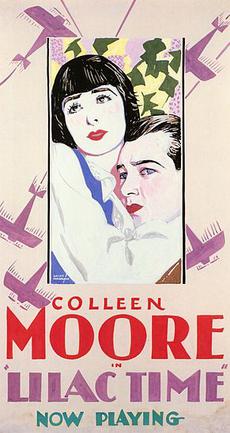
Lilac Time is a 1928 American silent romantic war film directed by George Fitzmaurice and starring Colleen Moore and Gary Cooper. The film is about young American aviators fighting for Britain during World War I who are billeted in a field next to a farmhouse in France. The daughter who lives on the farm meets one of the new aviators who is attracted to her. As the flyers head off on a mission, the young aviator promises to return to her.

Horrible Histories is a British children's live-action historical and musical sketch comedy television series, based on the bestselling book series of the same name by Terry Deary. The show was produced for CBBC by Lion Television with Citrus Television and ran from 2009 to 2014 for five series of thirteen half-hour episodes, with additional one-off seasonal and Olympic specials.
Natasha Anne Ryan is an Australian woman from Rockhampton, Queensland who went missing on 31 August 1998 when aged 14. Police had wrongly assumed that her best friend, Maioha Tokotaua, who was 15 years-old at the time of her disappearance, killed Ryan but they later accused the local serial killer Leonard Fraser. In 2003 police received a letter saying that Natasha was alive and provided a phone number and address at where she could be reached. The police raided the location that was mentioned in the letter and Ryan was discovered alive in 2003 at her boyfriend’s house hiding in a wardrobe, almost five years after she went missing, during the trial of the man accused of her murder. It was discovered that 14 year old Ryan had left home willingly to be with her older boyfriend, Scott Black, a 22 year old milkman, living and hiding in his home for years. In 2008, they married and reportedly the two have three children.
References
- Pollard, Justin. Charge! The Interesting Bits of Military History. St Ives: John Murray, 2008. Pages 208–210. ISBN 978-0-7195-2304-5